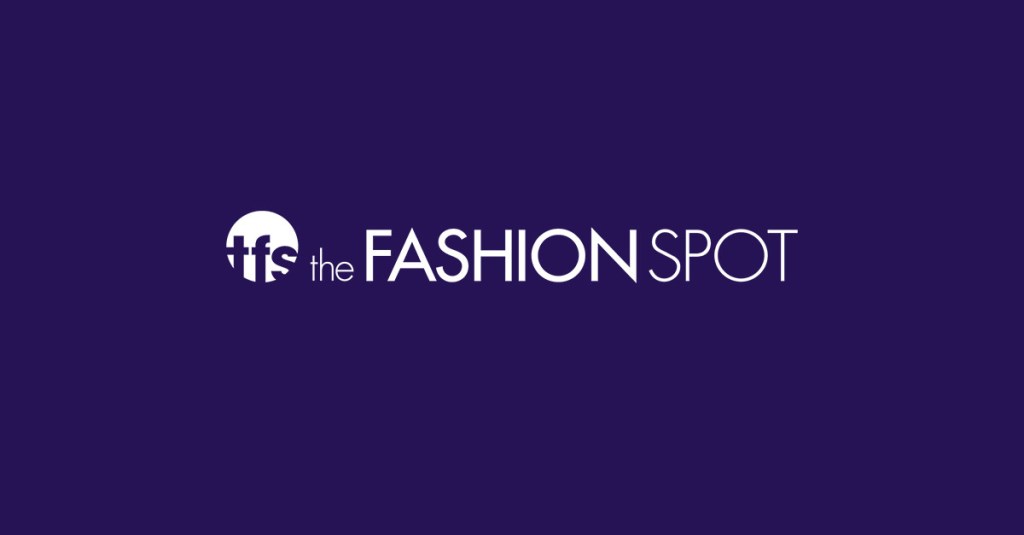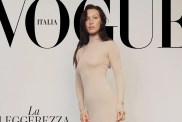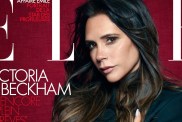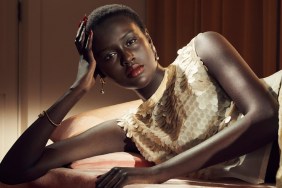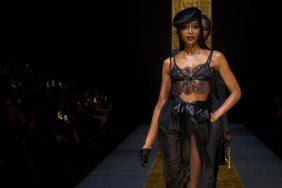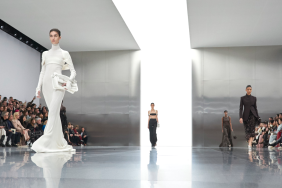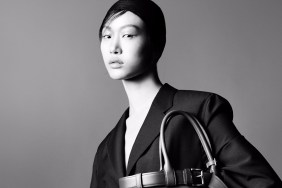8×10 GLOSSY: A picture 8×10 inches in size, printed on high-gloss paper. It is the standard for actors’ headshots, and the term is often used as a noun. (“Eight-by-Ten Glossy”)
ADVANCE:
1. Money which may be given to high-demand models to secure their agreement to accept a booking. If you aren’t well known, don’t expect an advance.
2. Money spent by the agency for things you need, that they expect to be repaid for. See “deductions”.
ADVERTORIAL: an ad which has some of the appearance of an editorial, but is created and paid for by an advertiser.
ART DIRECTOR: At a magazine or advertising agency, the person responsible for creating the look and layout of an ad or editorial presentation. Their decisions may determine the kind of models used in the production, and even the specific model chosen.
AUDITION: An opportunity to appear in front of people involved in the hiring process and do what they need you to do to demonstrate you are appropriate for a modeling job. The term “audition” is normally used for acting jobs, but also can be used for modeling. See “casting” or “go-see”.
B&W: A photograph, video or movie in which the image consists only of white, black and shades of grey, with no other colors.
BIG AND TALL: The male counterpart to “Plus Models”, used in catalog modeling and similar advertising. They are tall (6’4” and above), wear a suit size 44 and above, and are generally fit and proportional.
BOARD: The models represented by an agency, usually categorized into specialized divisions. There may be a “New Faces Board,” a “Men’s Board” and a “Classic” board, for instance. The term derives from the practice of putting model’s composite cards on the wall, either by tacking them up to a cork board or by putting a number of comps for each model into individual holders so they can be easily grabbed by agents for composite pulls, or given to visiting clients.
BOOKING EDITOR: The person at a magazine who books models.
BOOKER: A person at a model agency who negotiates with clients to get and contract for work for models. The booker may have other responsibilities as well.
BOOKKEEPER: Someone who keeps track of all the income and expenses you have from modeling. Your agent isn’t going to do it for you. Usually your bookkeeper is you.
BUYOUT: The client is purchasing unlimited usage rights to a model’s image, although a buyout may be only for a designated time period, geographic region or type of media. An example would be “two year print buyout in Spain, except for Internet”. If there are no qualifiers on the term, it means unlimited use for an unlimited time.
CALL SHEET: A detailed listing of who the creative team is for a shoot. It may include everyone from the photographer, stylist, makeup artist, drivers and caterers. It should give the precise location and directions to the shoot, and instructions on how the model should arrive. Any makeup, hair, wardrobe or other requirements may be on the call sheet. Many modeling jobs do not use call sheets (or at least do not distribute them to agencies), and the information the model needs to know will be given by phone call to the agency, or directly to the model.
CALL TIME: The time the model is due on the set. Generally the model should show up 15 minutes or so before the actual call time.
CAMPAIGN: A word used to describe a set of ads for a particular product. It may be as limited as a single print ad, or several coordinated print and TV ads.
CASTING:
1. The process of choosing models for a job.
2. A go-see.
CATTLE CALL: A casting that a large number of models (often hundreds) show up for because the casting director gave relatively broad direction to agencies, and may have used many agencies, or opened the casting to the public or advertised in in a newspaper, magazine or on the Internet. The probability of a model winning a cattle call casting is not great.
CHARGE-BACK: When you accept a job and don’t do it, the client can charge your agency for it. Your agency then charges you. And the charges can get pretty big.
CHART: Agency-speak for “your schedule”, maintained by them. Sometimes the chart is maintained, or “held”, by the mother agency for a model who is traveling and working with other agencies.
CLASSIC: A term used to describe older models, often in their 40s or later in life.
COLLATERAL: Additional uses that may be made of an image beyond the primary print ad. For instance, point of sale displays or hang tags.
COMMERCIAL MODEL: A model that specializes in modeling for advertising, normally print advertising. Commercial fashion models may do catalog or showroom work, or may appear in designer campaigns. Commercial print models typically appear in non-fashion print ads.
COMMISSION: A fee taken by an agency or manager based on fees earned by models. Typically it is a percentage of the model’s fees.
COMPOSITE CARD: (also “composites,” “comps” or “zed cards”.) A group of pictures (from one to as many as a dozen or more, depending on size and layout) of a model printed on card stock. The typical composite is printed on both sides of heavy, coated card stock and is roughly 5 ½ x 8 ½ inches. Some very experienced models produce “double” or even “triple” composite cards. A typical layout includes one headshot/beauty shot and the model’s name on the front of the card, and three or four pictures, the model’s stats and contact information on the reverse.
COPY BOOK: Models need more than one copy of their portfolios, and it is accepted practice to make a “carry book” out of high-quality copies of original tearsheets.
CREATIVE DIRECTOR: An advertising agency (or magazine) employee with overall responsibility for the creative design and direction of an ad (or editorial).
DEDUCTIONS: The money taken from a model’s earnings to pay back loans the agency has made to her for their expenses. Common in fashion agencies, less common in other kinds of agencies.
DEVELOP:
1. Turn exposed film into a picture.
2. Turn a person with modeling potential into a model who is ready to compete in the professional market.
DIRECT BOOKING: When a model is booked by a client without a go-see, either from pictures or from recommendation by the agency.
EDITORIAL: Material (text and illustrations) produced by or for a publication, and representing news, commentary or the opinion of the staff of the publication. Editorial works may appear in newspapers, magazines or even on television or the Internet.
EDITORIAL LOOKS: Generally “edgy” or “beautiful in her own way” appearance, as opposed to mainstream, pretty, “commercial” looks. So called because the frequent use of such models in contemporary fashion editorials.
EXCLUSIVE:
1. An agreement between a model and an agency that the model will work exclusively through that agency. Exclusive agreements may be limited by time, geography (only in New York, for instance) or modeling/acting discipline (exclusive for on-camera TV commercials).
2. An agreement that a model will not allow her image to be used to advertise any competing product for a specified period of time. It may also include a prohibition against public criticism of the client’s product.
FASHION MODEL:
1. A model who works with the fashion industry. She may appear in fashion editorials, fashion advertising, catalogs or TV commercials, or may do showroom or fit modeling.
2. A model who is represented by an agency which specializes in fashion modeling.
3. Short for “editorial fashion model”, which many people consider “real fashion models”. These are the highly specialized models who appear in high-end fashion editorials and campaigns, and normally meet the stringent height, stats and appearance specifications that people associate with “a model”.
FASHION SHOW SEASONS: Shows give buyers and magazine editors a chance to see what designers will be offering in upcoming seasons, so they present clothing appropriate to a season several months in advance. “Spring”, for instance, is normally presented in September or October.
FIT MODELING: The model has specific, exact measurements wanted by the designer, and puts on sample clothes to allow the designer or tailor to modify them to fit and move properly. Fit models can be of any type, although typically are size 6 for women, and size 40 regular for men.
FREELANCE:
1. A model working without agency representation.
2. To work with multiple non-exclusive agencies.
GO-SEE: Literally taken from the phrase “go see someone”. In commercial work generally a go-see involves going to see (or be seen by) a person who is casting for a particular job. In fashion work it may be more general: you go see people who have a history of hiring models, so that when they have a job come up they will know who you are. Go-sees may be general (you are one of a type of model the client has asked for) or specific: the client has requested you specifically.
GUARANTEE: Some agencies overseas, especially in Asia, will guarantee that a model will earn a specified amount of money during her contract period of several months. No ethical US agency guarantees a new model anything.
IMAGE BOARD: Typically used for “special situations” models, such as those who are not available for go-sees, but can be direct booked.
INDEPENDENT CONTRACTOR: On most modeling jobs, the model will be legally treated as a contractor, not an employee, so the client will not withhold payroll taxes, pay workers compensation insurance, or do any of the other things they do for employees.
MODEL AGENCY: A company which represents models, attempts to get them work, and is compensated predominantly by taking a commission from work they have gotten the model.
MOTHER AGENCY: An agency or manager who puts a model under an exclusive contract and then promotes the model to booking agencies. Normally the mother agency develops the model. Generally the mother agent sponsors models to cities far from where the model lives and manages relationships between the booking agency and the model. A good mother agency will provide continuing advice, support and assistance to a model who is with another booking agency. Mother agencies are compensated by taking a percentage of the model’s earnings for some period of time.
NEW FACE: a model new to the agency, still in development, who is being sent on go-sees and castings but not yet “promoted” onto a main board.
OPTION: Also referred to as a “hold”. A client has requested the right of first refusal on a model during a specified time. That means the model is obligated to be available for the client’s job if booked, and may not accept any other assignment. A “first option” means that client has priority over any other for that time period. A “second option” (or “second hold”) means the client has a claim to the model if the person holding the first option decides not to book the model for that time.
PETITE MODEL: Different kinds of modeling define what is “petite” differently. In fashion work a “petite” is normally a model who is 5’7” or less and wears a size 6 or less dress. In other kinds of modeling the meaning is closer to the general meaning of the term: small, without regard to specific criteria.
PLUS MODEL: In fashion modeling, refers to a model who wears a much larger dress size than the standard fashion model, but otherwise is similar to a typical fashion model. In most markets Plus models are from dress size 10 to 20, sometimes larger. The term is not widely used in commercial print modeling, although it is understood to mean someone of average or greater body dimensions.
PORTFOLIO: A collection of photographs and tear sheets of a model, compiled and presented in a book.
PROPORTIONAL: client-speak for “has pleasing proportions”. In modeling, this means relatively long arms and legs, and a body that is slim, or has a well-formed waist, if a plus model.
RESIDUALS: Money paid to a model or actor for continued use of their pictures after the photo shoot. In modeling “residuals” typically are paid when the usage rights originally purchased by the client have expired, and the client wants to continue to use the pictures.
SCALPING: A model agency recruits a model to leave her current agency and sign with them. As you can tell from the term, it isn’t a practice that agencies appreciate.
SHOW CARD: A special purpose card, similar to a composite card, created to bring attention to an agencies models as fashion show season approaches.
SPECIAL ARRANGEMENT BOARD: Used for well-known models, celebrities or other special cases where the model is available to the agency by arrangements they have with the person’s mother agency.
SPECIALTY MODEL: A model who specializes in body parts such as hands, feet, legs, backs and other parts. Shoe models are a subset of this, since they have to have standard sized feet (size 6-7 for women, 10 for men).
STAGE PARENT: A derogatory term used to describe a pushy parent of a child model or performer.
STATS: (“Statistics”) A description of the model’s basic appearance parameters and sizes. For female models, stats usually include height, bust/waist/hips measurements, hair and eye color, shoe size and dress size. For male models stats include height, jacket size, neck, sleeve waist and inseam measurements, shoe size, and hair and eye color. For actors stats are limited to height, weight, hair and eye color.
STREET CASTING: A casting which uses non-professional models, sometimes literally found on the street, to give a stronger appearance of reality to an ad.
TEARSHEET: The actual printed page from a newspaper, magazine or ad that a model’s photograph is published in. So called because it is “torn” from the magazine. Appearance on a website does not result in a tearsheet.
TEST SHOOT: In years long gone by, a “test shoot” would be one in which a photographer had a new film, piece of equipment or technique he wanted to try out, or a model he wanted to try shooting in anticipation of using her later for a job. Usually in such shoots no money changed hands, and at most the model was asked to pay for the cost of having prints made for her book. More recently, “testing” has also come to mean any shoots for a model’s or photographer’s portfolio or composite card, and it is commonplace for photographers to charge for their services.
TONED: In real life, means slim and fit. In modeling, can also mean “very slim”.
USAGE FEE/RATE: Models get paid for two things: work they do on the set, and the right to use their images in advertising. Sometimes the fee will be “flat,” meaning it includes both. But often the two will be separately listed in the booking, and the model will get paid for a specific, limited use of their pictures. If the client wants to do something more than what they paid for (different kind of publication media, different target audience, longer time, different geographical region) the model will get more money for additional usage.
The Professional’s Guide to Modeling
Copyright 2008 The New Models Academy, www.newmodelsacademy.com
Copyright 2008 The New Models Academy, www.newmodelsacademy.com
